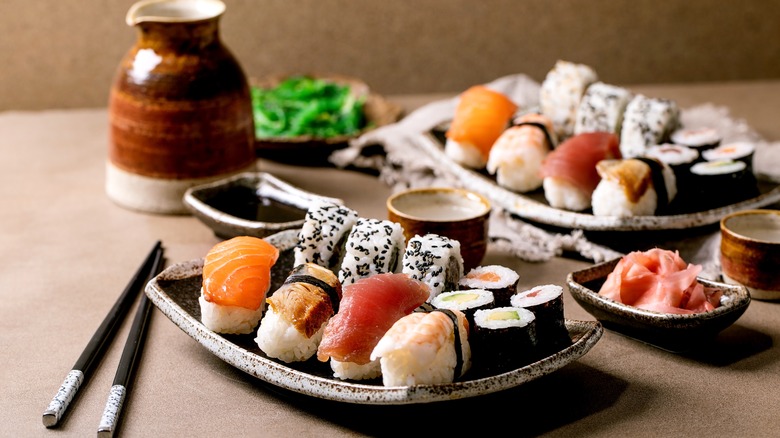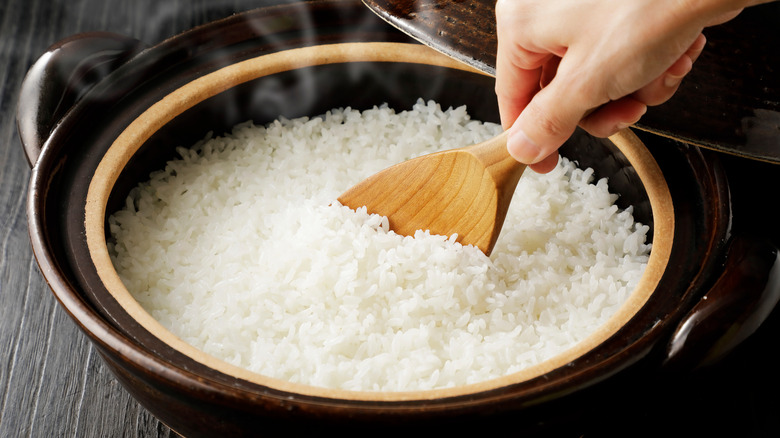The Ingredient Traditional Sushi Never Uses
As the love for sushi has grown in western countries in recent decades, so has the variety of sushi offered, from the traditional salmon nigiri to the nontraditional Philadelphia roll. The lines have become blurred as to what is sushi in the U.S. and other western countries as sushi restaurants increase their creative roll options and give them fun names. Traditional sushi in Japan, for starters, generally contains fewer ingredients than its Western counterparts. You won't be finding sauces drizzled on top of rolls and crunchy bits sprinkled over them. For example, the common tekka maki (tuna roll) contains only rice and raw tuna wrapped in a sheet of nori, per Sugoii-Japan.
Japanese sushi chefs also place great importance on the proper preparation of the rice used. Just One Cookbook explains that short-grain rice is used for traditional sushi. The cooked rice is seasoned with rice vinegar to improve the flavor of the rice, in addition to sugar, salt, and sometimes kelp. The rice in sushi is also on the inside of rolls in Japan, not on the outside, like it is often served in other countries, per Kobe Teppanyaki. This change was done to make sushi appeal more to Western sensibilities in order to not make the taste of nori (made from seafood) front and center. The preferred rice for sushi in Japan is short, white rice that is glutinous, per Kobe Teppanyaki.
Stick with white rice
Brown rice, quinoa, and other grains may have become more popular in recent years for their health benefits, but sushi purists don't want it served with their seafood. Both on restaurant menus and in grocery store sushi coolers, brown rice is used for sushi. Sujata Gupta wrote via NPR that brown rice detracts from the seafood used in sushi because of its strong taste compared to white rice. Mel Magazine describes brown rice's flavor as bitter and its texture as grainy.
Gupta said the texture of brown rice also is not appropriate for sushi because unlike white rice it stays firm after being cooked. The reason brown rice and quinoa have become increasingly popular options in places like the U.S. is that it appeals to people wanting a healthier alternative to white rice, per Kobe Teppanyaki. For example, brown rice contains more fiber and a little more protein than white rice, according to Food Network. Quinoa has been known as a superfood, per Healthline, and contains manganese, iron, magnesium, and zinc.
If having an authentic sushi experience is important for you, stick with the white rice and keep it simple.

